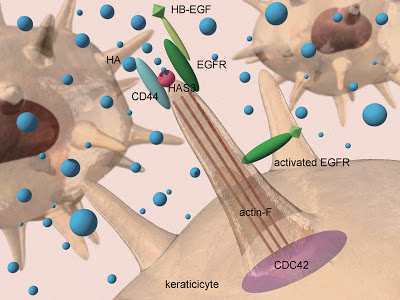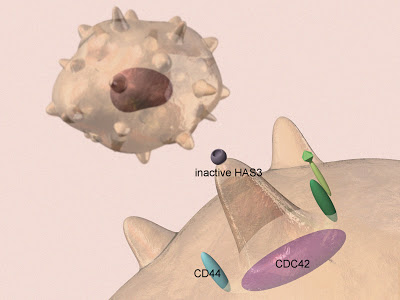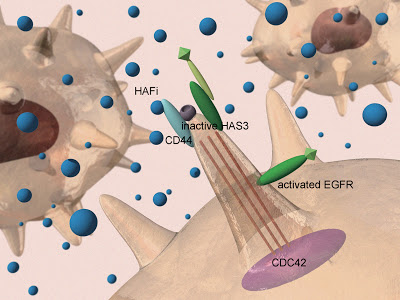
Why it works
Dr. Fukaya's Skin Repair Lotion contains Hyaluroan Acids of around 100,000 dalton, which help babies grow their skin. It's approximately sixteen weeks in the womb when a baby starts to grow its skin. During this period, Hyaluroan Acids of around 100,000 dalton temporarily increases in the amnion fluid of the womb, growing the baby's skin and changing the outer cells into epidermis.
It's approximately sixteen weeks in the womb when a baby starts to grow its skin. During this period, Hyaluroan Acids of around 100,000 dalton temporarily increases in the amnion fluid of the womb, growing the baby's skin and changing the outer cells into epidermis.
What is most interesting about the hyaluroan is that it is produced by the kidney's of the fetus itself, then urinated to the amniotic fluid. Babies grow their skin all by themselves!
External application of hyaluroan of 100,000 dalton - which Dr. Fukaya's Skin Repair Lotion is made of - is just like soaking damaged skin in the amniotic fluid around this sixteen week period. It effectively repairs damaged skin - the same way a baby creates its own skin.
HAFi (Hyaluronic Acid molecular weight of 50000 to 400000 dalton) is proven to prevent atrophic skin (skin thinning) and rosacea, which are the common side effects of Topical and Oral Steroids.
 Our epidermal cells (outer layer of skin) have micro spikes called Filopodia. The ends of these spikes produce the HAS3 enzyme, which creates the HAFi on its cell. When this HAS3 enzyme creates Hyaluronic Acid, it is joined together with the CD 44 receptor and sends Plus signals to CDC42. Then CDC42 actin filaments are made. Actin filaments are the frame of the Filopodia spikes, and without them Filopodia can’t grow its spikes.
Our epidermal cells (outer layer of skin) have micro spikes called Filopodia. The ends of these spikes produce the HAS3 enzyme, which creates the HAFi on its cell. When this HAS3 enzyme creates Hyaluronic Acid, it is joined together with the CD 44 receptor and sends Plus signals to CDC42. Then CDC42 actin filaments are made. Actin filaments are the frame of the Filopodia spikes, and without them Filopodia can’t grow its spikes.
This spike formation is very important, because the EGF (epidermal growth factor, the diamond-shaped light green one) can’t attach to its receptor without spikes. EGF stimulates epidermal cells, leading to cell division and proliferation.
 When topical corticosteroids are applied to skin, HAS3 becomes inactive. There are few Hyaluronan particles in the spaces between epidermal cells. Spike formation of epidermal cells becomes poor and EGF can’t work anymore. This is how epidermis (outer layer of skin) becomes thinner (epidermis atrophy) and skin barrier dysfunction occurs.
When topical corticosteroids are applied to skin, HAS3 becomes inactive. There are few Hyaluronan particles in the spaces between epidermal cells. Spike formation of epidermal cells becomes poor and EGF can’t work anymore. This is how epidermis (outer layer of skin) becomes thinner (epidermis atrophy) and skin barrier dysfunction occurs.
 Even if the HAS3 is inactive, external supplementation of HA (HAFi, blue round) can stimulate CD44, grow spikes and activate the EGF pathway. That is the mechanism by which external application of hyaluronan works.
Even if the HAS3 is inactive, external supplementation of HA (HAFi, blue round) can stimulate CD44, grow spikes and activate the EGF pathway. That is the mechanism by which external application of hyaluronan works.
Not all masses of hyaluronic acid have this ability of stimulating epidermal cells. Only around 100 thousand dalton mass of hyaluronan works.
